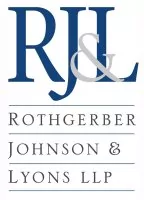For many years the IRS required employers to collect and pay Social Security, Medicare, and unemployment taxes on all severance payments that they made to former employees after they had been laid off or terminated. This practice was challenged by CSX Corporation when the company's refund request for these payments was disallowed by the IRS. After years of litigation, the court held that payments a company makes to involuntarily terminated employees under a reduction-in-force plan are supplemental unemployment compensation benefits (SUCBs) and thus not "wages" for the purposes of Social Security, Medicare, and unemployment taxes.
While the refund potential has been created through this recent decision, the ability to initiate a refund proceeding is limited by the Internal Revenue Code. In this type of case, a company has only three years to amend its payroll tax returns and thereby receive a refund. Due to the time limitation, a company that could potentially benefit from the CSX decision should take action immediately if it will prove to be cost-effective.
If an employer has recently made substantial employee terminations and layoffs, it should consider how the decision affects the payments and whether or not the company is eligible to file amended returns. This process will require that an employer review the amount of SUCBs it has paid within the three-year statutory period. To do so, a company should audit all payroll records to verify the amounts of SUCBs that were paid pursuant to the severance payments.
If the company decides to move forward with filing an amended return, it also must decide whether or not it will take action on behalf of former employees. The company has the ability to apply for the former employee's portion of the overpayment. Without the assistance of the company, terminated employees will almost never be able to recover their refund. If the company makes the decision to request both portions of the refund, the IRS will require the company to obtain written permission from all former employees to enable the company to seek the refund on their behalf. The employees would also need to certify that they would not attempt the recovery on their own.
If an amended return is filed and the refund issued, the IRS still retains the ability to audit the refund. For this reason, it is suggested that the refund amounts be held in escrow until the time frame for the audit has passed.
As a result of the CSX decision, some companies may be due refunds of Social Security, Medicare, and unemployment taxes that they made on severance payments to separated employees following a layoff or termination. Furthermore, the decision clarifies that certain payments a company makes to terminated employees aren't wages, which allows such workers to keep more of their severance pay.
There are many challenges that face an employer that might choose to proceed with the refund procedure. If your company implemented a reduction-in-force plan over the past three years, we recommend that you contact one of our tax attorneys to discuss the risks and benefits associated with securing the refund.
Denise D. Hoffman is an associate in RJ&L's Denver office where she represents clients with various estate planning needs, ranging from simple will plans to techniques involving a much greater level of sophistication. She assists individuals, families, and business entities in the analysis, planning, and creation of trusts to obtain proper tax planning and property disposition. She provides assistance with other aspects of estate planning, including probate and estate administration, charitable giving, and structuring of various business entities.
The content of this article does not constitute legal advice and should not be relied on in that way. Specific advice should be sought about your specific circumstances.

